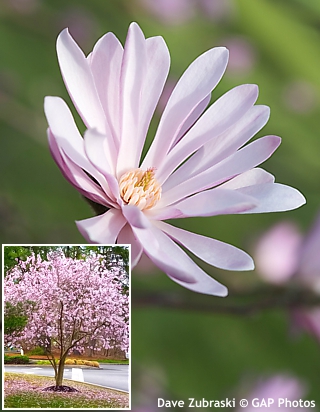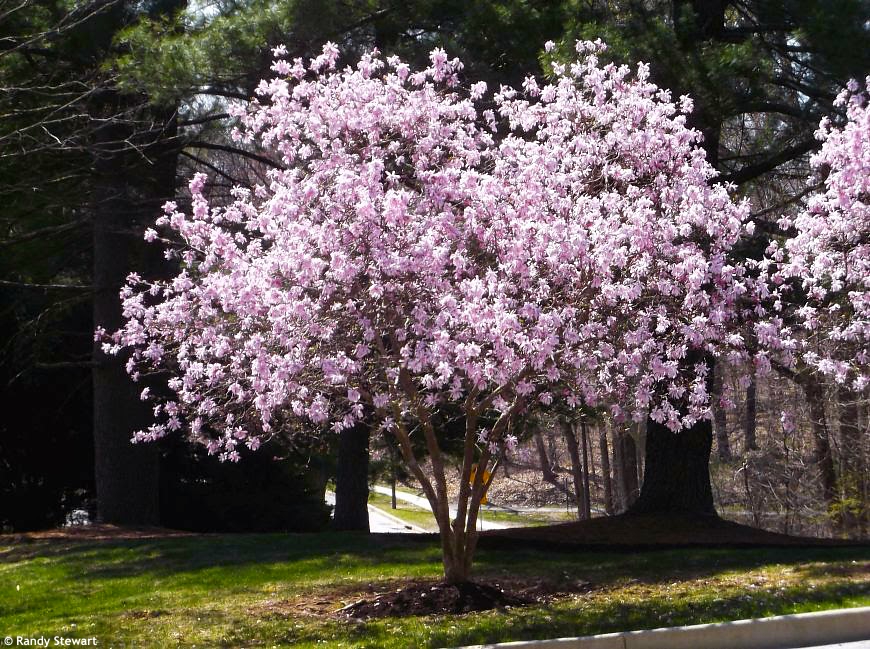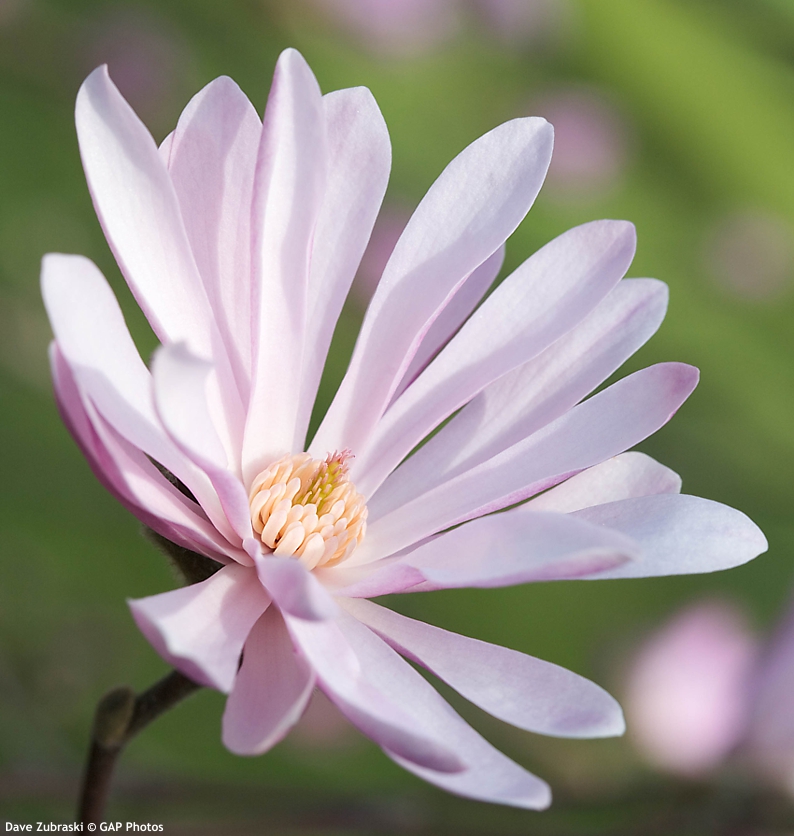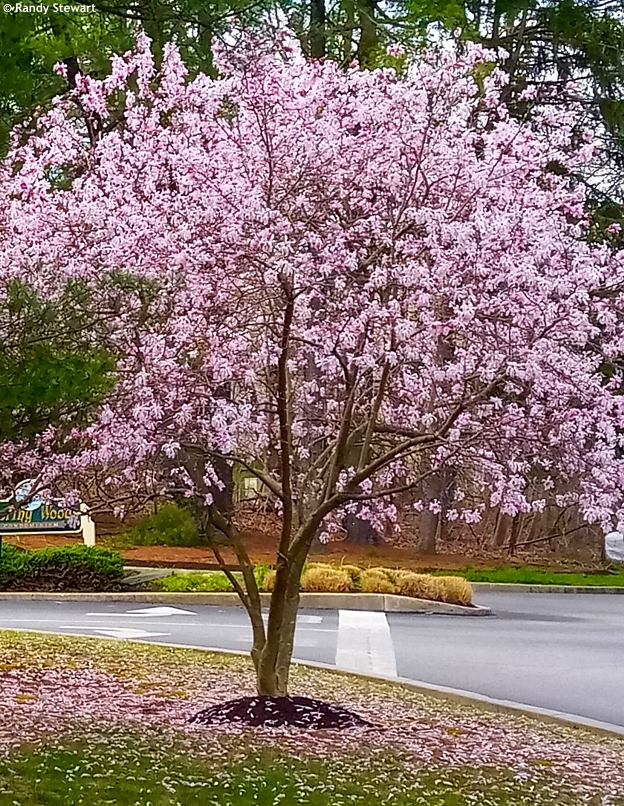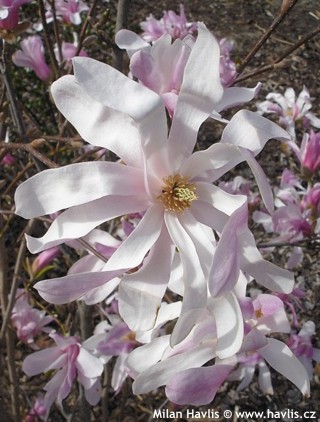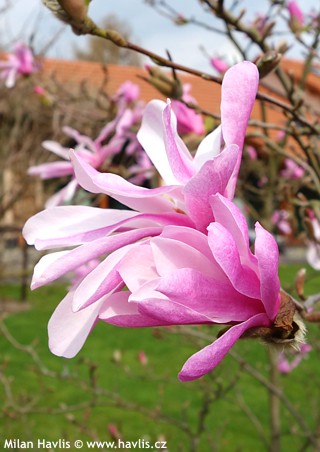Magnolia 'RASPBERRY FUN' magnolia
Raspberry Fun magnolia is a chance seedling of m. x loebneri Leonard Messel selected by Carl Ferris Miller in Korea in 1987. It produces slightly larger flowers with numerous petals (16-18). They are deeper pink outside and pale pink inside. Being almost 2 weeks later in blooming they often escape late frosts. Deciduous leaves are broadly elongated to narrowly obovate and fresh green with deep mahogany shades as they emerge. The plant grows faster than Leonard Messel into pyramidal habit. It was registered in 1994.
Carl Ferris Miller (1921-2002) was born in Pittston, Pennsylvania, USA, and during WWII as Naval Intelligence Officer was sent to Japan 1945 from where he moved to South Korea in 1949 where he remained until his retirement in 1980, working in the Bank of Korea (S. Korean central bank). At the age of 41 a chance made him buy a plot near Chollipo village on the coast of Yellow Sea, far from the capital. He could see that the empty land would do with some trees and he started planting them. One, ten, hundred, a thousand. Planting trees became a passion for him, and he especially loved hollies and magnolias. Without any plan or agenda, he turned the place into a renowned and highly honoured arboretum of world-wide fame for which he was awarded several times. Now the place holds over 13 thousand species and attracts both general and professional public. In 1979 Miller adopted a Korean name Min Byung-gal (or Min Pyung-Gal), gave up US nationality and received Korean citizenship and nationality. His contribution to the world of horticulture is highly honoured and one of the most beautiful large-leaved oaks was named by him – quercus dentata ‘Carl Ferris Miller’.
Magnolias are not supposed to be pruned. You can prune old shrubs if ill, or trim them to shape or to reduce size, or make an elementary cut to young plants of unsightly or unhealthy appearance. Do this as soon as possible after flowering to secure setting of flower buds for the following year. Be aware that each magnolia can respond differently to pruning.
Deciduous magnolias are quite easy plants. All they need is light, well-drained, acidic soil with equal moisture throughout the year. Once established they can do with occasional drought but will not look as nice as the ones with regular watering. Just pay attention to how you plant your magnolia. First, find it a spot where it will live forever and ever. It does not like transplanting. And as it makes shallow roots reaching well over its spread, stay away from disturbing the roots by digging or messing about around it. Just cover the soil with bark mulch and do not plant anything else near it after say the second year after planting onwards. You could damage the important top roots that absorb maximum moisture and nutrients from the soil. Also avoid planting magnolia too deep. Thus, you could be digging it a grave. Hardy to about -29 °C (USDA zone 5).
Last update 16-12-2020

































